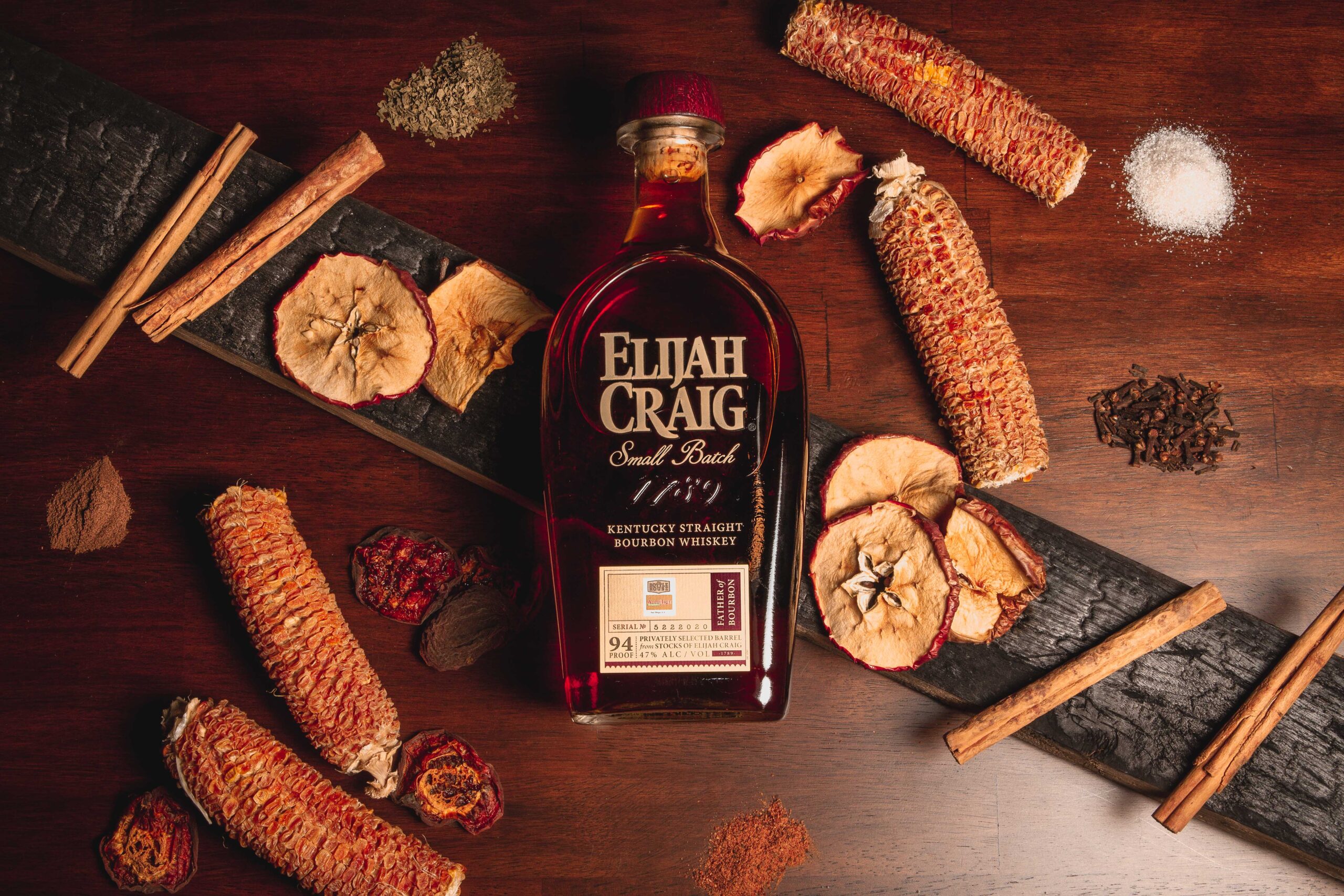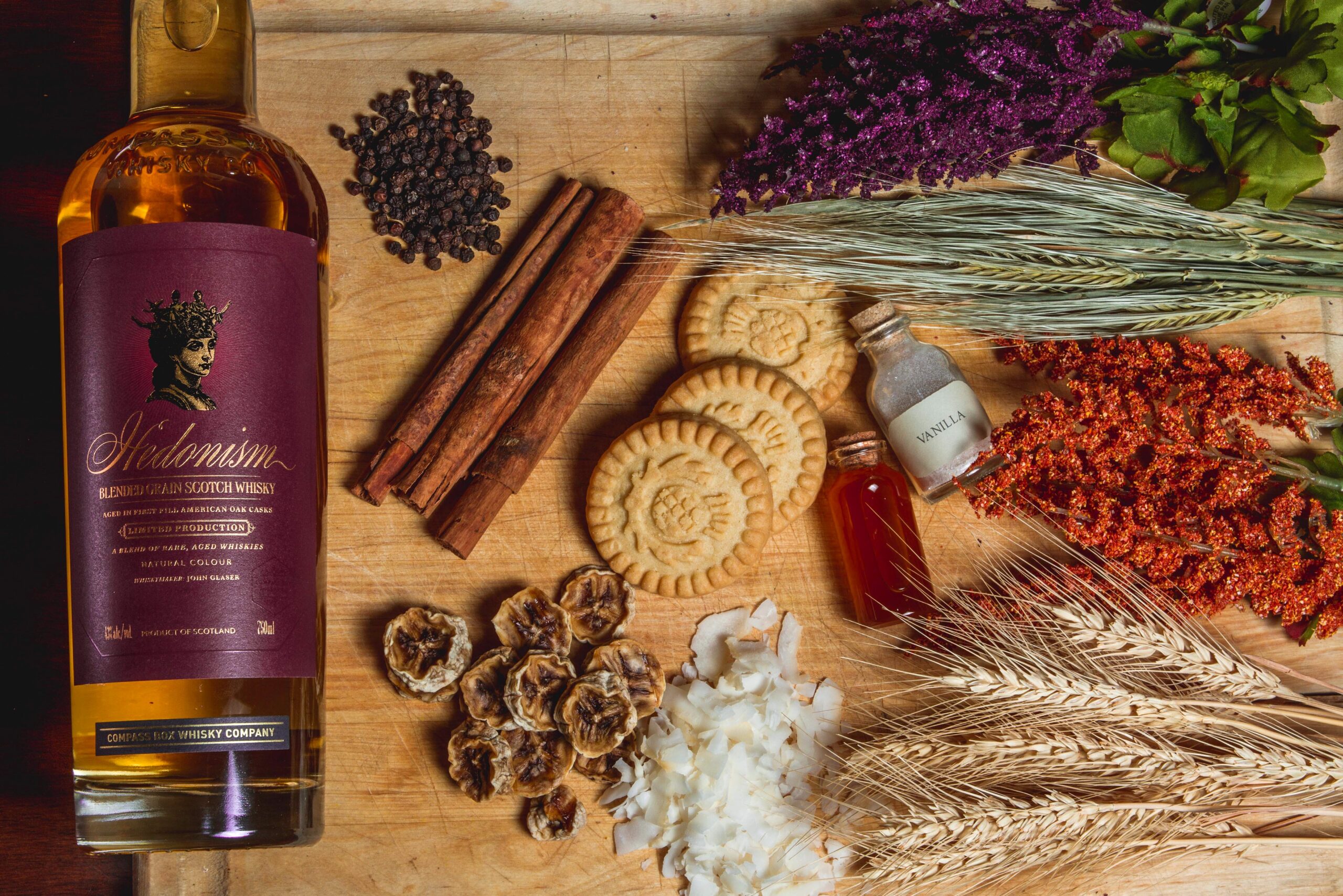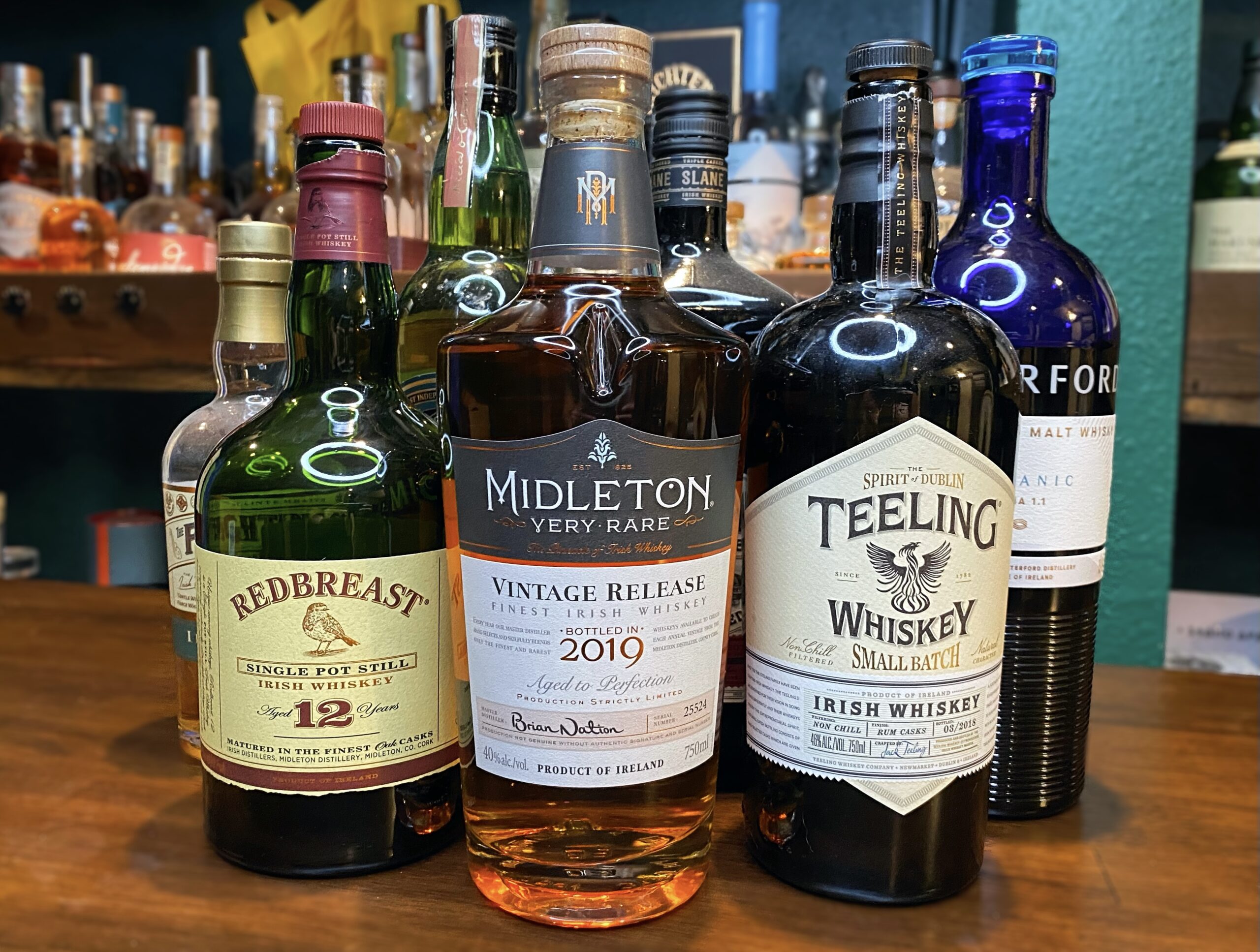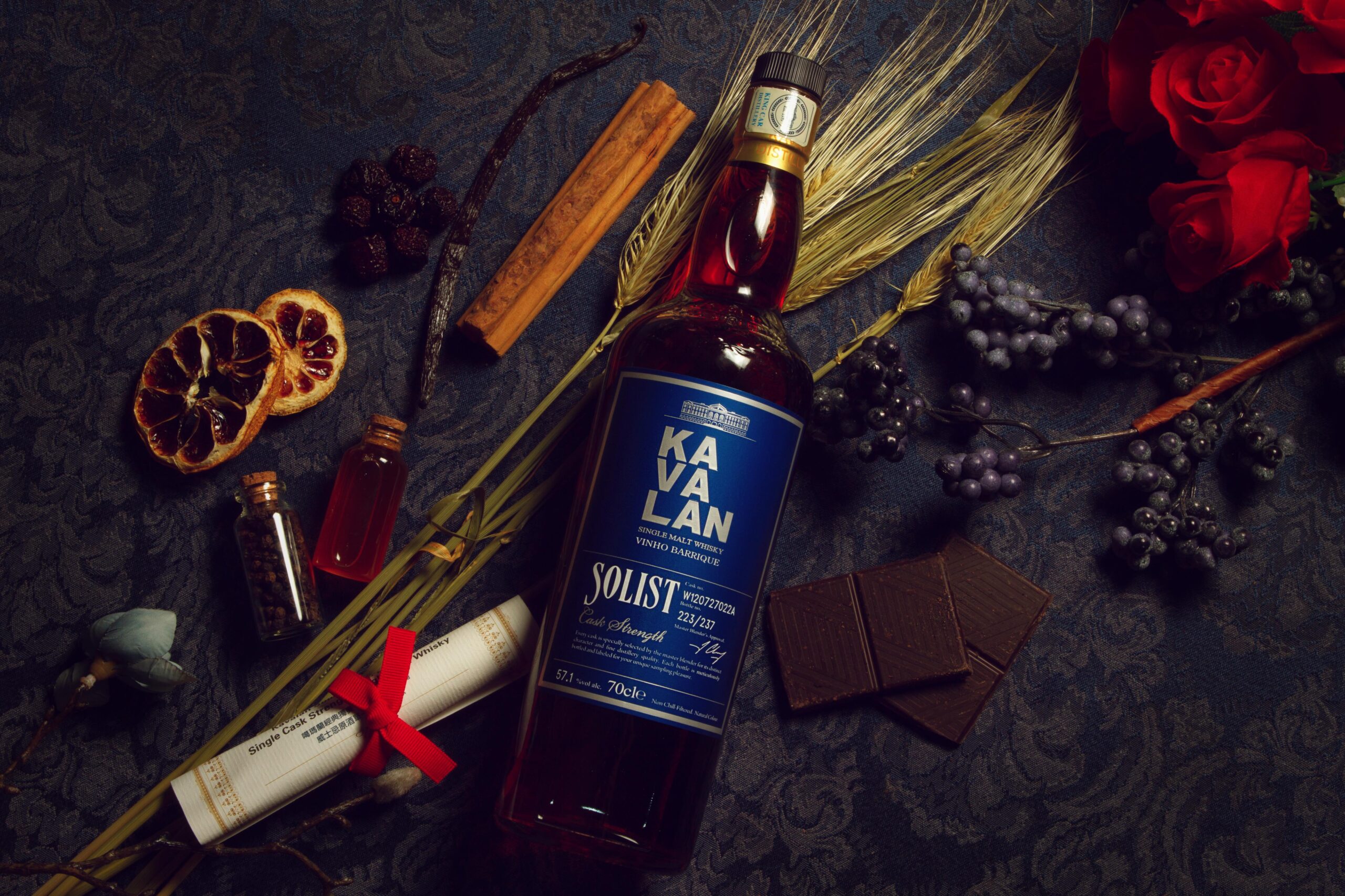
Bourbon
Bourbon at its base is an American whiskey distilled primarily from corn. There are various rules, regulations, and terminology regarding different variations, but the basic facts are that in order to be called bourbon whiskey, it must meet these 5 rules:
- Produced in the United States
- Not exceeding 80% alcohol by volume (160 proof)
- Created from a fermented mash of not less than 51 percent corn
- Stored at not more than 62.5% alcohol by volume (125 proof)
- Aged in charred new oak containers
In addition to these specific rules, it also must follow the United States’ rules regarding whiskey:
- Distilled from a fermented mash of grain at less than 95% alcohol by volume (190 proof)
- Having the taste, aroma and characteristics generally attributed to whisky
- Bottled at not less than 40% alcohol by volume (80 proof)

Rye
Rye whisk(e)y refers to two similar but different styles: American Rye Whiskey and Canadian Rye Whisky.
American Rye Whiskey
American rye whiskey has 4 rules it must follow in order to be labeled “rye whiskey”:
- Whisky produced at not exceeding 80% alcohol by volume (160 proof)
- Fermented mash of not less than 51 percent rye
- Stored at not more than 62.5% alcohol by volume (125 proof)
- In charred new oak containers
In addition to these specific rules, it also must follow the United States’ rules regarding whiskey:
- Distilled from a fermented mash of grain at less than 95% alcohol by volume (190 proof)
- Having the taste, aroma and characteristics generally attributed to whisky
- Bottled at not less than 40% alcohol by volume (80 proof)
Canadian Rye Whisky
Canadian whisky is synonymous with “rye whisky” and often used interchangeably. This is because historically much of the mashbill for Canadian whisky was rye grain since it was the most readily able to be grown that far north. However, there is no requirement for rye to even be in the mashbill for it to be considered “Canadian Rye Whisky.”
Canadian rye whisky must be aged a minimum 3 years in wooden barrels. There is no specification that the barrels must be made of new oak or charred, only that it be a maximum of 700 liters in size.

Scotch
Scotch whisky is distilled spirit from Scotland. There are two primary types: malt whisky and grain whisky. Of that, there are five different varieties: single malt, blended malt, single grain, blended grain, and blended whisky.
The rules regarding the production of Scotch whisky are defined by the Scotch Whisky Regulations 2009:
- Minimum 40% alcohol by volume (80 US proof)
- Containing no added substances, other than water and/or (E150A caramel coloring)
- Produced at a distillery in Scotland from water and malted barley (other cereal grains may be added)
- Mashed, fermented, and distilled to an maximum of 94.8% alcohol by volume (189.6 proof)
- Aged in Scotland in oak casks not larger than 700 liters
- Aged minimum three years

Irish whiskey
Irish whiskey is distilled spirit from the Island of Ireland (including Northern Ireland). There are four different varieties: single malt, single pot still, single grain, and blended.
The rules regarding the production of Irish Whiskey are defined in the Irish Department of Agriculture Whiskey Technical File of 2014:
- Produced from a mash of malted cereals with or without whole grains of other cereals
- Fermented by the action of yeast
- Distilled at an alcoholic strength of less than 94.8% by volume (189.6 proof)
- Aged minimum 3 years in wooden casks, such as oak (but not strictly requiring oak), in a cask not larger than 700 liters.
- Minimum 40% alcohol by volume (80 proof)
- Containing no added substances, other than water and/or caramel coloring
Although traditionally spelled “whiskey,” there is no rule that states it cannot be spelled “whisky”.

Japanese
Japanese whisky is a distilled spirit most often made in similar fashion to Scotch Whisky. It has ambiguous rules and regulations making it hard to lock down exactly what defines it. Technically, any distilled spirit from any of the region of world can be aged physically in Japan in a wooden cask for any short amount of time and be labeled Japanese Whisky.
There are several types of Japanese whisky: single malt, blended malt, single grain, blended grain, and blended whisky.
On February 16, 2021, The Japan Spirits and Liqueurs Makers Association issued a formal statement regarding the regulations its association members had to follow to be considered “Japanese Whisky”. It is worth mentioning that while many Japanese whisky companies are members of this association, some are not, and there is no requirement of membership in order to produce whisky.
The recommended regulations are as follows:
- Malted grains must be used (but may also include other cereal grains)
- Only water from Japan may be used in the whisky making process
- The saccharification (conversion of starches into sugars during the mashing process), fermentation, and distillation must take place at a Japanese distillery
- Must be aged in wooden casks in Japan for a minimum of three years
- The bottling must be done in Japan
- The whisky must be a minimum 40% alcohol by volume (80 proof)
- Plain caramel coloring may be used
- Whiskies that don’t meet the above requirements may not use the names of geographical locations in Japan, the Japanese flag, or the names of people that evoke the country in their labeling

American Single Malt
American Single Malt is whiskey distilled and aged in the United States from malted barely. There are no current formalized rules or regulations put forth by the Alcohol and Tobacco Tax and Trade Bureau (TTB), so it’s a bit like the Wild West in how it’s made. Some distillers take influence from Scotch Whisky and seek to keep much of the rules the same. Other distillers, take the ambiguity as a sign to experiment and create new and exciting expressions of whiskey. The creativity of American distillers has pushed the production of American Single Malts from one side of the spectrum to the other.
- Made from 100% malted barley
- Distilled entirely at one distillery
- Mashed, distilled, and matured in the United States of America
- Matured in oak casks no larger than 700 liters
- Distilled to no more than 80% alcohol by volume (160 proof)
- Bottled at 40% alcohol by volume (80 proof)

World Whisky
World Whisky is a catch all phrase for whisky from all over the world that doesn’t have its own specific or widely recognized category. The methods of production and regulations regarding these different geographic origins of whisky vary from similar to scotch whisky to vastly different. Here are just some of the regions which encompass this category:

